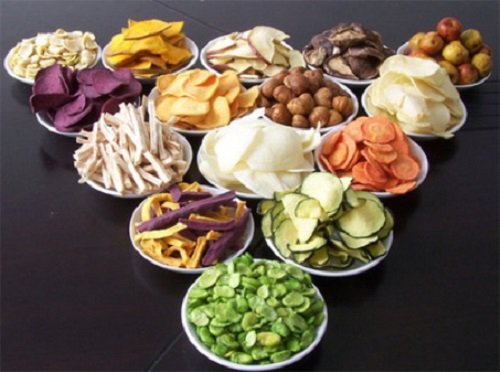
Chia is a tiny edible seed from the desert plant “Salvia Hispanica” (Latin name) which can be added to food for nutritional purposes. Chia seeds originate from South America, but are also grown in Australia, Bolivia, and Ecuador – generally close to the equator. Chia seeds are sticky and the plant which has purple or white flowers which can sprout in a matter of days.
In pre Columbian times, Chia seeds were regarded by the Aztecs as the food of the gods. During the days of the Aztec empire, tribes could only communicate via runners, and men had to literally run from one tribe to the next. This of course required tremendous energy, and legend has it that these men relied on chia seeds for nutrition, hydration, and energy to survive the journey. Used not only as a staple food, the Aztecs, Incas and Mayans also used them as currency and as offerings to their gods in ceremonies. The word “chia” actually means “strength” in the Mayan language, and “oily” in Aztec.
The Aztecs in particular used the seeds in a multitude of ways: to stimulate saliva, clean eyes and treat wounds, sore throats, colds, body odours, constipation, and prostrate problems, and were therefore held in very high regard.
It was a major crop in central Mexico between 1500 and 900 B.C. and was still cultivated well into the 16th century AD.
Chia was outlawed however, after the arrival of the Spanish Conquistadors due to its use for pagan rituals, and was largely forgotten about until its fortunate recent rediscovery.
Small groups of tribes including the Tarahumara Indians (of the Copper Canyon in Mexico) did manage to avoid the Spanish onslaught and continued cultivating the seed. The Tarahumara Indians are renowned for their talents in long distance sprinting, and Christopher McDougall wrote his famous book “Born to Run” about the life of this group of people. The tribe used a blend of maize and chia to fuel them during arduous ultra runs through the desert.
Chia seeds were largely forgotten though until 1991 about 500 years later when Dr. Wayne Coates (Chia: Rediscovering a Forgotten Crop of the Aztecs), began cultivating the seed, after researching alternative crops for Argentinean farmers.
Chia seeds used to be grown largely in Mexico, but are now mostly produced in Australia, Bolivia and Ecuador.
Due to their impressive nutrient profile chia seeds have become very popular across the celebrity world with the likes of Oprah Winfrey, Orlando Bloom, Gwyneth Paltrow, and Miranda Kerr singing their praises. Gwyneth even has chia recipes on her GOOP site.
Just where does Chia fit in on a timescale of seed/grain cultivation? See below for approximate information on our dietary addition over the millenia.
12000BC – Einkorn, species of wheat becomes the first grain to be domesticated in the Fertile Crescent.
10000BC– Emmer is the second domesticated grain – which has evolved from Einkorn in Egypt. Wild rice can be found in North America and Asia. Unleavened flatbread is made for the first time.
9300BC – Evidence shows that wild grains were kept in storage near the Dead Sea in Jordan.
8500BC– Barley is domesticated in Mesopotamia (Iraq).
8000BC – In China, rice is cultivated for the first time, in the lower and middle Yangtze River Valley.
6700BC – Maize is first domesticated in Mexico.
6500BC– Emmer wheat is now used in India and parts of Europe.
5500BC – Flour is now ground using millstones.
5000BC– Millet domesticated and cultivated in Asia and Africa. Emmer wheat has now reached Spain. Barley grown in Japan.
4000BC– Quinoa is cultivated by the Incas in Peru, Bolivia, and Chile.
3000BC– Rye is domesticated in parts of Turkey, Armenia, and Iran. The first leavened bread is produced by the Egyptians using yeast. Emmer wheat can now be found in England and Scandinavia. Sorghum is domesticated in sub-Saharan Africa.
2600BC – Chia is domesticated in Mexico.
2500BC – Rice is domesticated in India.
2300BC– Freekeh is discovered in Eastern Mediterranean.
2000BC– Emergence of oat grains, during the rule of the Ancient Egyptian 12h Dynasty. The first known noodles are made in China using millet.
1500BC – Rice is domesticated in Africa.
1000BC– Oats are domesticated in Europe. Buckwheat is cultivated in China.
500BC – Spelt is grown in England. Rice is grown over widely scattered areas of Asia, from India, to the Philippines.
300-200 BC– Rice is grown in the Middle East and Japan.
200-150BC – Evidence shows use of couscous by the Berber people of North Africa.
AD 500-900 – Earliest reputed windmill for grinding grains designed in Persia.
1400-1600 – Crop rotation is introduced.
1500s – Colonists introduce grains to the New World. ( e.g. the Spanish introduce wheat and barley to South America)
1600s – English and Dutch settlers bring barley to the United States.
1700-1800 – The Industrial Revolution leads to advanced farming techniques, larger scale farming and improved quality of grain, and bread making becomes firmly established as a business and a trade.
1800-1900 – The first refined flour is made to improve storage and satisfy demand.
1900 onwards – Advance in crop breeding , mechanisation and management lead to better quality and yield of grains and more efficient production.
So, now that you know a little more about the history of Chia, maybe it’s time to give this ancient super food a try!
For more nutritional information, benefits, and uses, check out: www.chiawellbeing.com









